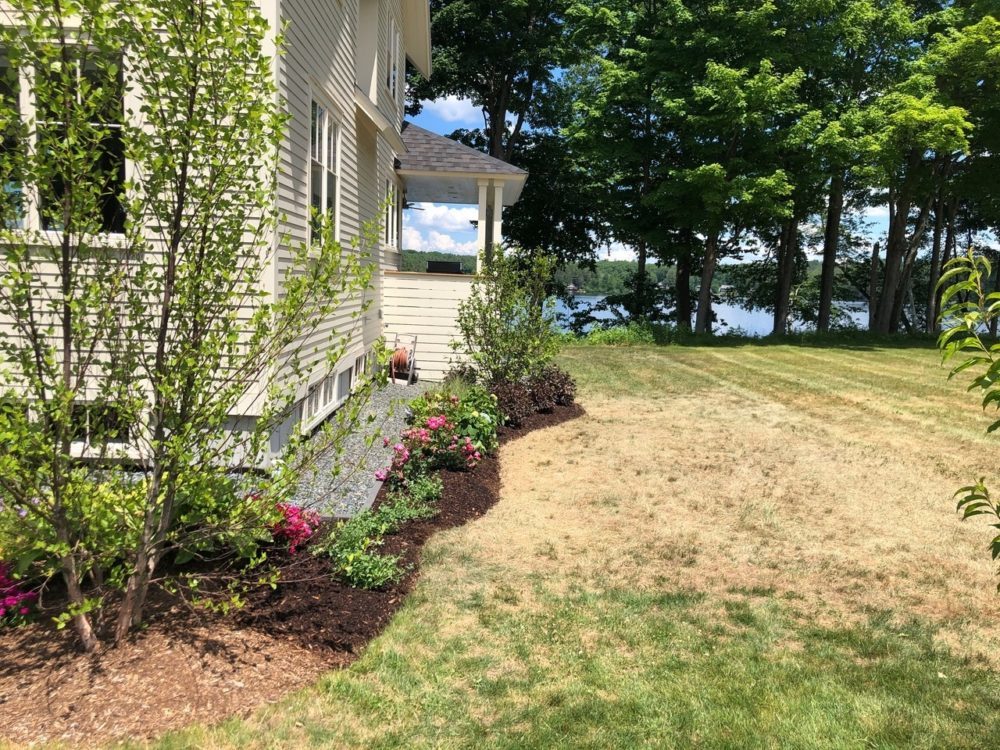It’s only June, but New England lawns are already toasty brown due to the high heat and drought. Thin lawns, sandy soil and buried objects such as a rock ledge or a septic cover are additional factors while the heat radiating from streets, driveways, patios and light- colored house siding adds more surface heat to the surrounding grass. Your turf will remain dormant until things cool off and we receive decent rainfall.
Important facts to remember during this type of unusual weather:
- Don’t mow the lawn at all, let it sit. Any mowing adds stress to the plants. Cutting the leaf blade causes additional critical moisture loss. Click here for our Turf Tips on Mowing.
- Water if you can for 30-60 minutes, allowing for a deep soaking, every 2-3 days. However, any watering is better than none. As a general rule, watering should be done in the early-to-late morning to minimize the potential for turf diseases. Watering won’t green the grass but it will keep the living crown alive (the base of the plant), increasing the chance for a better recovery later. This is especially true the longer the drought and heat last. Grass can survive for about 2-4 weeks with no water and high heat, but after that thinning/death begins. Click here for our Turf Tips on Watering.
- The longer the grass stays dormant (brown/tan or even white/straw-colored), the more likely the soil will super heat – quickly degrading any crabgrass barrier that was applied. Any water is helpful but if not possible, remember that weeds will be coming…it’s just a matter of when.
- Crabgrass specifically is a superior, high temperature plant unlike our desirable grasses. Most desirable turf cannot function at temperatures in the high 80’s to 90’s and dormancy results. Crabgrass is the opposite – functioning at its best in high temperatures. When we hear, “my neighbors’ lawn is green”, it’s likely because it’s full of grassy and broadleaf weeds that remain green in these conditions. Temporary irony.
- A brown lawn is a magnet for heat-loving insects like chinch bugs and grubs, which will appear in August. If your lawn has not recovered by early fall, it should be inspected for these damaging pests.
What is Chippers doing to help?
Our fertilizers will not add additional stress or damage the lawn at the rates/types applied.
- Our granular fertilizers are slow release by nature (granular/organic) and remain dormant on the lawn surface until rain or irrigation is applied. Even then, the pellets take time to break down while allowing valuable nutrients to be present when rain/water comes, increasing the chance of recovery.
- Our liquid fertilizer is also slow release and the rate has been decreased to accommodate the high heat/drought conditions. We will generally spray a lawn with other beneficial “low impact” visits such as turbo iron, stress relief, tea, seaweed, and/or crabgrass spraying (there will be lots of these to do in the upcoming weeks).
If weeks of dry, hot weather don’t stretch into months, an otherwise healthy lawn should recover with rain and cooler temperatures later this summer. However, this is only June…we have a lot of summer left to go!


